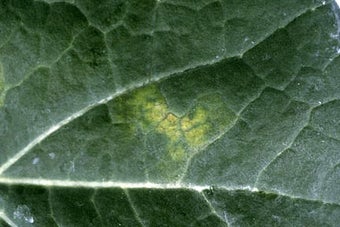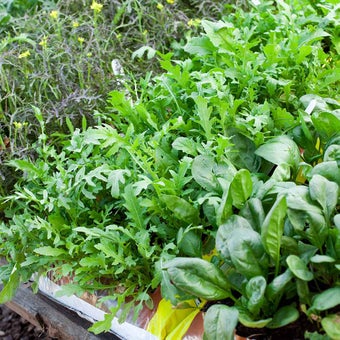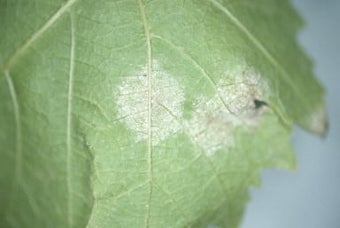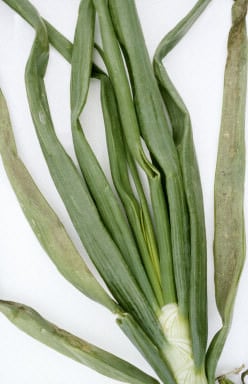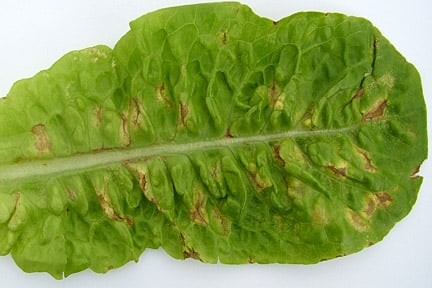
Quick facts
Common name - Lettuce downy mildew
Scientific name - Bremia lactucae
Plants affected - Lettuces
Main symptoms - Yellow blotches and white mould on leaves
Caused by - Fungus-like (Oomycete) organism
Timing - Indoors any season, outdoors early summer until mid-autumn
What is lettuce downy mildew?
Lettuce downy mildew is a disease caused by the fungus-like micro-organism Bremia lactucae. This is a common disease on both greenhouse and outdoor lettuces. Although indoor lettuce may be attacked at any time of year, outdoor lettuces are affected from early summer until mid-autumn.
Bremia lactucae has many -distinct strains and affects many other plants including: Centaurea (cornflower), Cineraria, Gaillardia and globe artichokes. But only those strains from lettuce and very close relatives can infect lettuce.
Symptoms
You may see the following symptoms:
- On leaves: Yellow patches on upper leaf surfaces, often angular because they are limited by the veins. A fuzzy growth of whitish mould on the corresponding underside. Later, the infected tissues turn brown and die

Control
Non-chemical control
- Remove infected leaves promptly to prevent spore release and contamination of the soil. As the disease frequently only affects outer leaves the hearts can often be harvested and the rest of the plant removed and destroyed
- Rotate lettuce crops to minimise the risk of infection from soil-borne resting spores
- Do not overcrowd plants, because high increases the risk of infection
- Choose resistant cultivars where available - ‘Leny’ and ‘Lettony’ are examples. However, new strains ('races') of the pathogen frequently emerge that can overcome the resistance genes in previously-resistant cultivars. As a result, plant breeders are continually looking for new resistance genes, and releasing new cultivars. These are usually bred for commercial growers but in some cases could eventually become available to gardeners, so keep an eye on seed catalogues
Chemical control
There are no chemicals available to gardeners for the control of downy mildews.
Biology
The downy mildews are a large group of plant diseases caused by microscopic fungus-like organisms related to the pathogen that causes tomato and potato blight. Despite a similar name and certain similarities in symptoms, they are unrelated to the powdery mildews.
Like other downy mildews, Bremia lactucae is described as a biotroph; a pathogen that penetrates into host plant tissues over an extended period without killing them, while it extracts from the living host cells. During this period it releases airborne spores from the fuzzy fungus-like growth on the underside of leaves, which disperse to initiate new infections. These spores land on other lettuce leaves, germinate in water on the leaf surface and penetrate directly into the tissues. This disease is therefore worse under wet conditions.
When the leaves finally die, the fungus produces resting spores (known as oospores). These can remain in the soil and may infect the roots of a succeeding lettuce crop. However, most infection occurs from wind-blown spores.
Infected tissues are often colonised by grey mould (Botrytis cinerea) and this can lead to further rotting.
